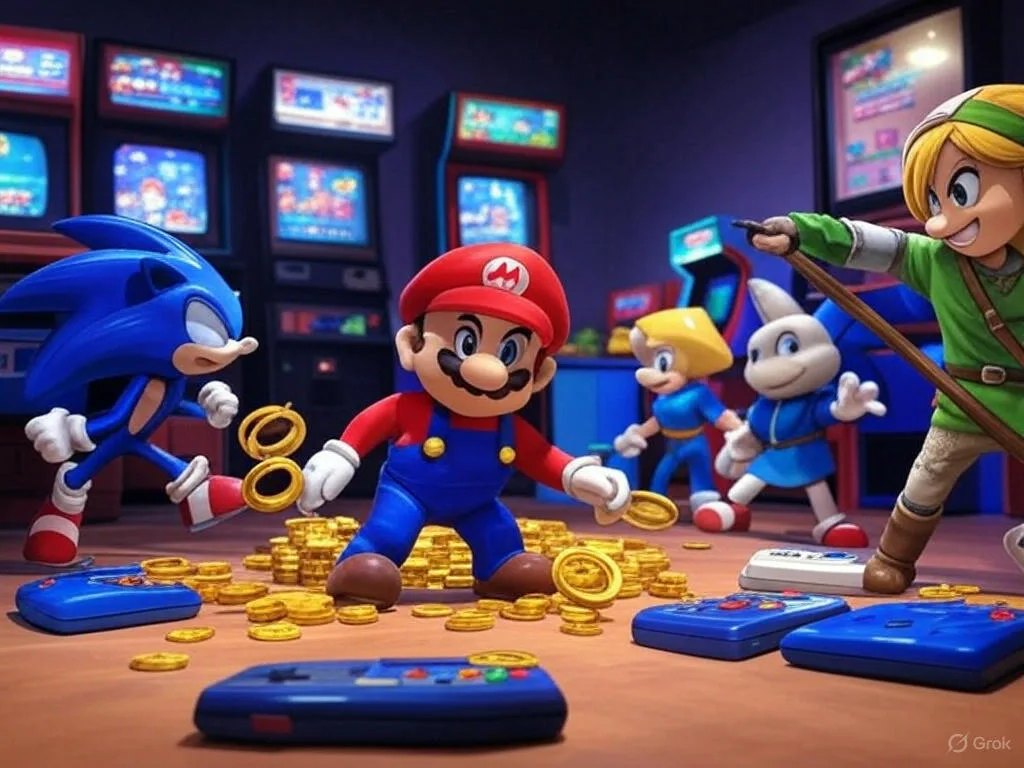Have you noticed a significant comeback of pixelated visuals, nostalgic soundtracks, and classic game mechanics? Welcome back to the golden age of gaming! Retro video games, once considered nostalgic novelties, have re-emerged as powerful cultural and economic forces in the gaming industry. Driven by nostalgia, enhanced through remakes and remasters, and supported by vibrant online communities, retro games are bridging the past and present. In this edition of The Awesome Blog, we’ll dive deep into the reasons behind this resurgence and explore its implications for gamers and developers alike.
Nostalgia: The Heartbeat Behind the Retro Trend
Nostalgia, simply put, is the warm embrace of remembering the good old times. For gamers, it’s evoking memories of playing classics like Super Mario Bros. or Sonic the Hedgehog. This emotional pull isn’t just sentimental—it’s powerful marketing magic, reconnecting brands with audiences by resurrecting old favorites through new releases, retro consoles, and emulation.
Gaming companies are tapping into this longing, knowing gamers cherish these personal connections. It’s why Nintendo’s NES Classic Edition flew off shelves, reminding everyone how valuable those childhood memories are.
Remakes & Remasters: Bringing Classics to a New Generation
Players today breathe new life into beloved titles through remakes and remasters. Consider Final Fantasy VII Remake or The Legend of Zelda: Link’s Awakening. These games balance nostalgic charm and modern enhancements, making old stories feel fresh but familiar.
However, not every remake hits the right note. Some fans criticize superficial remasters as mere cash-ins. Regardless, when executed thoughtfully, these revitalized classics unlock heritage gaming to new audiences, preserving the magic for future players.
From Pixels to Perfection: Retro Elements in Modern Indie Games
Interestingly, contemporary developers aren’t just revamping old games—they’re creating brand-new experiences inspired by retro aesthetics. Independent games like Shovel Knight, Celeste, and Undertale incorporate classic visual and musical styles, capturing that nostalgic essence while innovating gameplay.
This creative blend of old and new also gave rise to unique styles like the “HD-2D” graphics seen in games like Octopath Traveler, enriching the landscape for both veteran gamers and newcomers.
Preserving Digital History: Why It Matters
Digital preservation has become crucial in safeguarding our gaming heritage. Older games risk becoming obsolete as we shift toward new technology, leaving cherished experiences inaccessible. Thankfully, initiatives like Valve’s release of Team Fortress 2 source code and Xbox’s AI-driven Muse platform ensure digital preservation remains a priority.
Platforms like GOG.com also excel in making retro games easily accessible, ensuring we don’t lose important pieces of gaming history to the tides of technological advancement.
Community Power: The Social Aspect of Retro Gaming
Retro gaming’s resurgence isn’t only corporate-driven; it’s propelled by dedicated online communities. Platforms like YouTube, Twitch, and specialized forums unite gamers, providing spaces to celebrate nostalgia, discuss strategies, and collaborate on preservation projects. Local meetups also reinforce the passionate enthusiasm—creating networks that drive the revival forward.
These communities prove that retro gaming thrives not only through technology but through shared passion and purpose.
Future Directions: Where Retro Gaming Is Headed
As modern gaming evolves, retro components continue reshaping how we play. Businesses will likely capitalize further on emotional connections, expanding preservation efforts and developing innovative ways to engage communities.
Moreover, studying retro gaming opens pathways to understanding our relationship with technology and memory—highlighting cultural continuity and bringing history into the digital era.
Key Takeaways
- Nostalgia remains a powerful emotional force fueling the retro gaming revival.
- Remakes and remasters connect new audiences with classic games, yet requiring thoughtful execution.
- Indie games creatively blend old-school elements with modern gameplay innovations.
- Digital preservation efforts are critical for maintaining gaming history and culture.
- Online communities and social media strongly influence the retro gaming landscape.
This retro revival goes beyond mere nostalgia—it’s transforming contemporary gaming, fostering community creativity, and paving the way for future innovation. Whether you’re a seasoned gamer cherishing childhood memories or a new player discovering classics for the first time, the influence of retro games promises to continue shaping the gaming world for years to come.

Leave a Reply